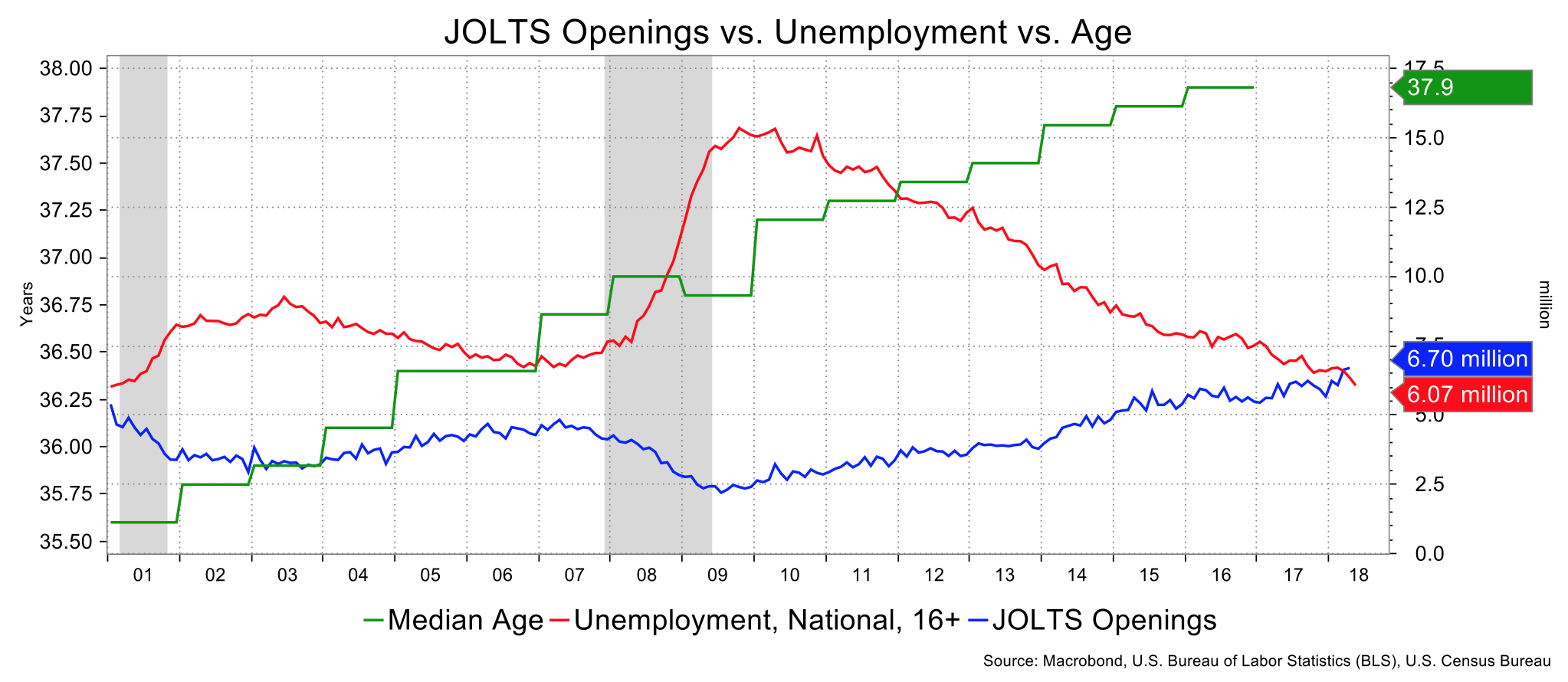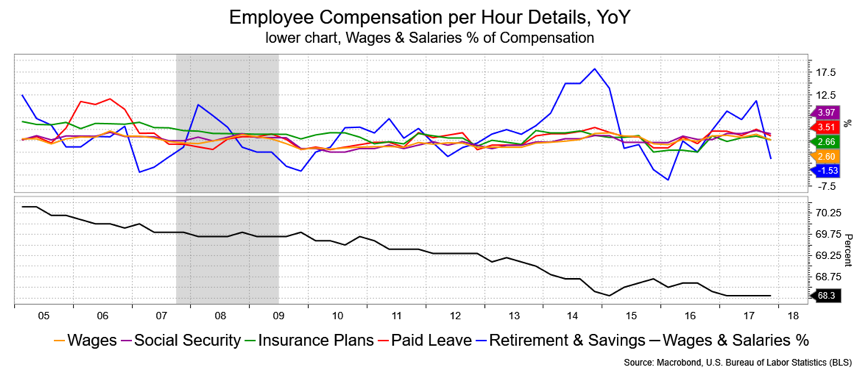The most recent Job Opening and Labor Turnover Survey report certainly generated a lot of brouhaha.
Job openings, at 6.7 million, exceeded the most recent broad read on the level of U.S. unemployment for the first time since the JOLTS series started in late 2000. Needless to say, such a phenomenon warrants attention with its veiled warning about wage growth and an overheating economy, even though the trajectory of the two series has been moving toward this for the last nine years. Still, let’s be frank, it was a slow news week.
Of course, there’s more to the story. Is this cross of the two measures really the signal that, at last it’s laying the ground for higher wages to draw people from the sidelines? That remains a very open question.

First, there is the age factor. According to the Census Bureau, the median age in the U.S. was 35.6 years in 2001 and in 2016 hit 37.9—it’s projected to rise to 39.3 in 10 years and 42 in 20 years. It’s possible that people can be drawn off the sidelines with higher wages, but the age factor works against that. Further, there’s the skill set question. I’ve read about a shortage of truck drivers (though no wage incentives to accompany that), but I don’t see a 50-year-old former bond trader coming off the sidelines to haul things across the country.
Even with training and skill-building, is it realistic for someone in their 40s and beyond to come off the sidelines and move—I should say afford to move—from a rusting location where they’ve been out of the workforce for a while to, say, the pricey Silicon Valley or Brooklyn start-ups? Is it realistic to expect this age bracket to trade up in home value, take out a larger mortgage or, perhaps, compel one spouse in a household to give up a job for somewhat better wages? Those are all rhetorical questions, by the way.
And still, why now for the wage gains? What’s been the delay?
I think one of the factors is simply that many people are content to simply have a job versus demanding wages as much as businesses complain about shortages, because they’re not willing to foot the bill for training or actually offer better incomes.
But, getting back to the initial point, that the aging workforce has ramifications. We’re still dealing with the consequences of the net worth hits of the last 18 years, meaning that older workers are still rebuilding their retirement funds. Evidence suggests they’re staying in the workforce but have achieved a level of income which isn’t likely to go up once they’re 50 plus. So, wages stagnate for this large cohort.
Consider compensation more broadly. Wages and salaries as a percentage of overall compensation has been coming down as insurance, retirement and Social Security contributions have increased; wage gains have underperformed. There’s some evidence of “inflation” but just not on the discretionary wage front and into areas that seem less elastic, especially to an aging population.
I like the paid leave category in particular. I don’t see someone in their 50s or 60s going back to work or changing jobs if they have to forego four weeks vacations or flex time. There are those doctor’s appointments to consider.

While the number of part-time workers has fallen, it’s still relatively elevated compared to prior expansions. This speaks to overall skills level, or perhaps a general reluctance by businesses to add full-timers.
The subtext to the JOLTS data is about the nature of those openings. Of the 6.698 million openings, 735,000 were in retail trade, 1.145 million in healthcare/social assistance, and 939,000 in leisure and hospitality. So, 42 percent of the openings were in jobs that typically don’t pay well.
David Ader is Chief Macro Strategist for Informa Financial Intelligence.





